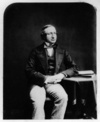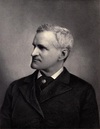and the French commanders of Fort Frontenac (Kingston, Ont.). His supposed friendship with the British did not, however, prevent him from accepting from Governor Vaudreuil
Ontario up to the time of the launching of the steamship Frontenac, at Ernesttown, Ontario, 7th September, 1816,” OH, 23 (1926): 33–44. C. H. J. Snider, “Mighty Maltese of
.
Ononwarogo recruited Indians to accompany Lieutenant-Colonel John Bradstreet* against Fort Frontenac (now Kingston, Ont.) in the summer of 1758
and Fernow), III, 121-25; IX, 236–39, 247, 255–58, 362, 384–86, 388–93. Eccles, Frontenac, 169–70, 189. Lanctot, Histoire du Canada, II, 118, 142.
Buade* de Frontenac as a lifelong ally of the French, and warned him privately against the treachery of the Foxes and Mascoutens, whose spokesmen were also present. A few days later Iroquois were
Buade de Frontenac; b. c. 1650; d. 1698.
Ourehouare was a chief of the Cayuga villages which had been established on the Bay of
Buade* de Frontenac that he was “a good-for-nothing weakling since he needed a horse to carry him.” In another encounter with the governor recorded by
from Fort Frontenac (Kingston) on Lake Ontario to Percé. He returned to France in the autumn of 1677.
In 1683 he was guardian of the convent at Rouen
Aloigny de La Groye. For ten years Papineau served faithfully under Frontenac [Buade*] and
. . . , suivi des relations officielles de Frontenac, Monseignat et Juchereau de Saint-Ignace . . . (Montréal, 1898), Archange Godbout, “Paradis,” SGCF Mémoires, I (1944), 30–33. Ernest
. The character depicted is not La Salle, but Parkman. Frontenac [Buade*], the bombastic old courtier and
them by the governor of the colony, Buade de Frontenac, that they encroached on the
imprisonments, as he was moved in turn to forts Niagara (near Youngstown, N.Y.), Toronto, and Frontenac (Kingston, Ont.), then to Montreal and Quebec. In Montreal on 19 June 1751 he was examined by
Frontenac (Kingston, Ont.). He made several trips to the pays d’en haut, including one in 1729 when he led the provisioning convoy from Montreal into Michilimackinac (Mackinaw City, Mich
Lorimier de la Rivière. Governor Frontenac [Buade*] added to the penalty by relieving the two of their
Buade* de Frontenac, he was appointed to the Conseil Souverain in January 1673 in place of Nicolas de Mouchy*, and two years later
.
In 1673 Buade de Frontenac established a fur-trading post on Lake Ontario which
Joly-Cœur, had attempted to poison Cavelier* de La Salle at Fort Frontenac (Kingston, Ont.), shortly after Governor
with the Chevalier Thomas Crisafy* to Fort Frontenac (Cataracoui, now Kingston, Ont.). He received one more promotion in that year, to sub
Meulles. In 1686, after de Meulles’ departure, he worked with his father at the registry of the Conseil Souverain. At the request of Frontenac







